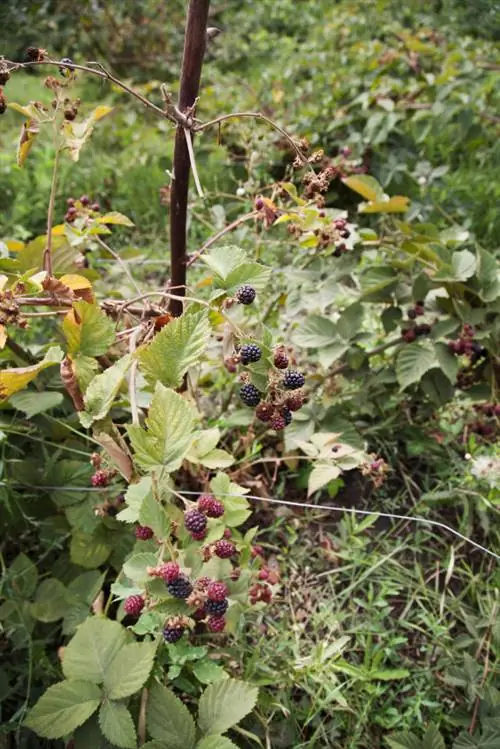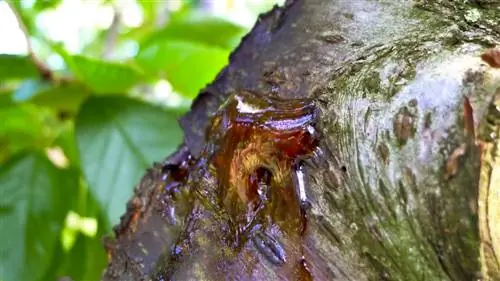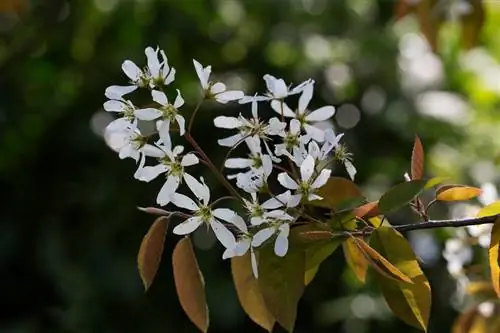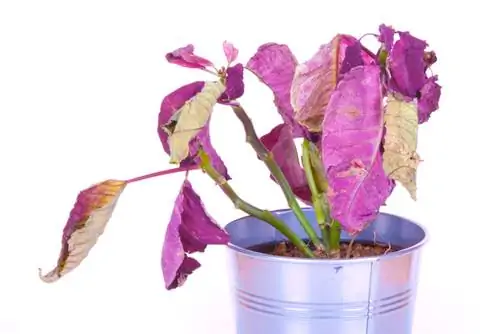- Author admin [email protected].
- Public 2023-12-16 16:46.
- Last modified 2025-01-23 11:20.
Wild blackberries in the forest rarely suffer from serious disease infestation. The blackberry varieties bred for the garden, on the other hand, sometimes need a little help against various pathogens.

What diseases occur in blackberries and how can they be prevented?
Important blackberry diseases include Rubus disease, vine disease, powdery mildew, downy mildew, gray mold and Colletotrichum fruit rot. Trellises, berry fertilizer, regular cutting of harvested canes and removing infected plant material help preventatively.
Animal pests on the blackberry canes
In addition to the diseases caused by fungi and other pathogens, there are also numerous pests that can cause damage to the leaves and fruits. One of the best-known pests on blackberry plants is the so-called blackberry gall mite. It sucks on the fruits, which means they no longer fully ripen and remain red. The best antidote against the proliferation of the blackberry gall mite and the equally harmful flower stalker is to cut off the harvested blackberry canes in autumn and winter. In this way, the clutches and winter hiding places of the pests can be removed using the shoot tips of the old canes.
Care and fertilizer for the vitality of blackberries
Prevention is the best way to prevent diseases from occurring on blackberry canes. The general vitality of the crop should be increased by placing the blackberry plants in a not too dense and well-ventilated shape using a trellis or other climbing aid for blackberries. In addition, malformations on the leaves, canes and fruits can also be the result of an inadequate supply of some nutrients. Fertilization with special potassium-containing berry fertilizers (€10.00 on Amazon) or a biological alternative in the form of animal manure or compost should be administered several times a year if possible. Regularly cutting off the two-year-old canes after the harvest provides the new shoots with enough light and space, but deprives diseases and pests of their livelihood.
The most important blackberry diseases and how to combat them
Most of the following diseases are difficult to control and often occur when the population density is too high:
- the Rubus diving
- the vine disease
- powdery and downy mildew
- the gray horse
- the Colletotrichum fruit rot
With rubus vine, the side shoots grow in a compressed and tuft-like shape. The blackberry vines affected by this are weakened in their vitality and usually die within about five years. Vine disease, on the other hand, initially causes black and purple spots to appear on the vines. Black fruiting bodies of this type of fungus later form, which, if severe, can also lead to the death of the plants. With downy mildew, the blackberries dry out before they ripen, while with powdery mildew, a whitish-gray coating forms on the leaves and tendrils of the blackberry plant. You can spray against mildew with an organic decoction made from nettles or horsetails that have been soaked in water for a few days.
Tips & Tricks
Although there are some chemical remedies against blackberry diseases, these usually spoil the usability of the fruit for at least a year. Some diseases can be contained by consistently removing infected plant material and equalizing the crop density.






